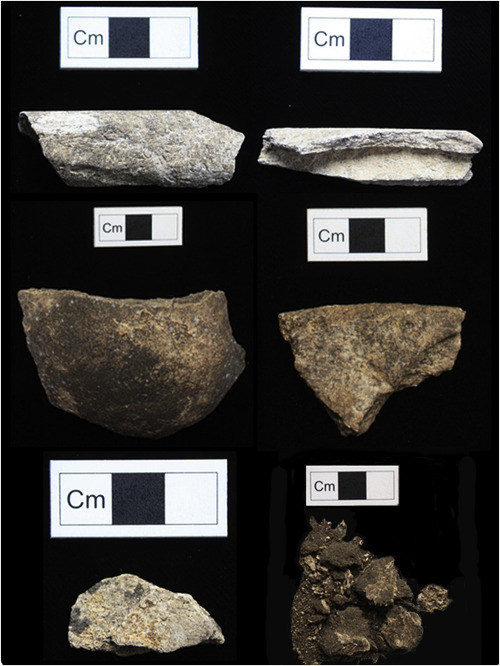@ WFS ,World Fossil Society,Riffin T Sajeev,Russel T sajeev
Finding Britain’s last hunter-gatherers: A new biomolecular approach to ‘unidentifiable’ bone fragments utilising bone collagen
doi:10.1016/j.jas.2016.07.014
In the last decade, our knowledge of the transition from foraging, fishing, and hunting to agricultural food production has been transformed through the molecular analysis of human remains. In Britain, however, the lack of Late Mesolithic human remains has limited our understanding of this dietary transition. Here, we report the use of a novel strategy to analyse otherwise overlooked material to identify additional human remains from this period. ZooMS, a method which uses bone collagen sequences to determine species, was applied to unidentifiable bone fragments from 5th millennium deposits from the Late Mesolithic site of Cnoc Coig (Oronsay, Inner Hebrides) using an innovative new methodology. All samples bar one produced ZooMS results, with 14/20 bone fragments identified as human, and the remainder a mixture of pig and seal. 70% of bone fragments had sufficient collagen for stable isotope analyses, however none of three human bone fragments analysed had sufficient endogenous DNA. By conducting AMS dating and stable isotope analysis on this identified collagen, we provide new data that supports the view that the exploitation of marine resources partially overlapped with the earliest agricultural communities in Britain, and thus argues against the idea that forager lifeways in Britain were immediately replaced by agriculture c.4000 cal. BC. Unfortunately, we were unable to explore the genetic relationship between contemporaneous farmers and foragers. However, the more persistent bone protein could be used to identify species, determine date, and assess diet. This novel approach is widely applicable to other early prehistoric sites with fragmentary skeletal material.

Selection of bone fragments from the Cnoc Coig assemblage used within this research; highlighting the range of sizes, elements and preservation. From top, L-R, ZooMS IDs: seal, pig, remainder human.
 August 12th, 2016
August 12th, 2016  Riffin
Riffin  August 12th, 2016
August 12th, 2016  Riffin
Riffin